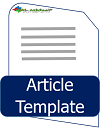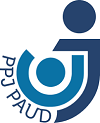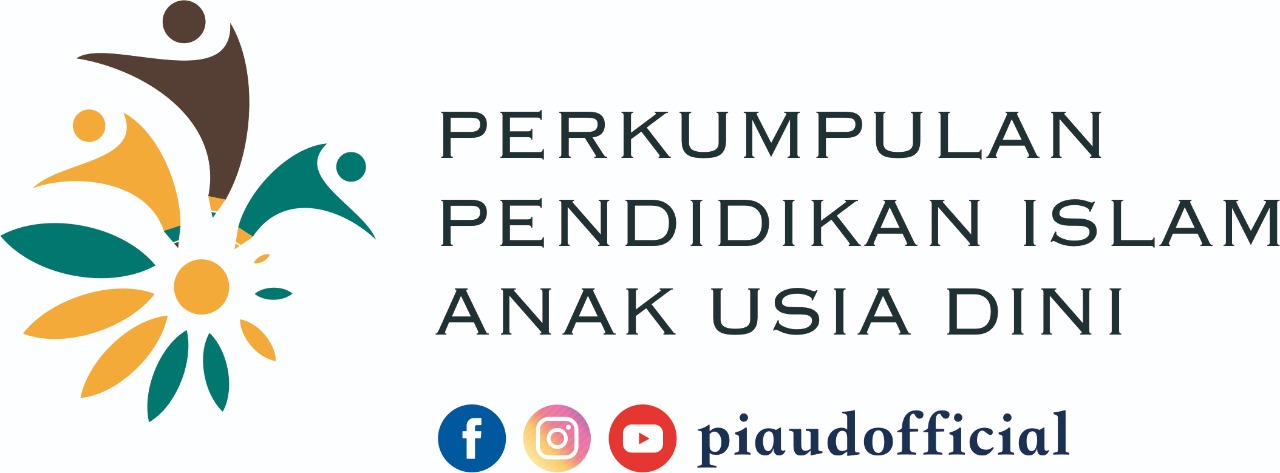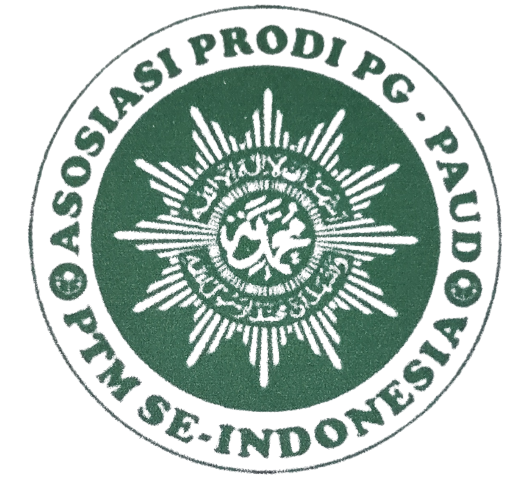Online Submissions
Already have a Username/Password for Al-Athfaal: Jurnal Ilmiah Pendidikan Anak Usia Dini?
Go to Login
Need a Username/Password?
Go to Registration
Registration and login are required to submit items online and to check the status of current submissions.
Submission Preparation Checklist
As part of the submission process, authors are required to check off their submission's compliance with all of the following items, and submissions may be returned to authors that do not adhere to these guidelines.
- The submission has not been previously published, nor is it before another journal for consideration (or an explanation has been provided in Comments to the Editor).
- The submission file is in OpenOffice, Microsoft Word, RTF, or WordPerfect document file format.
- Where available, URLs for the references have been provided.
- The text is one-half spaced on A4-paper size,consisting of 4000-6000 words;uses a 12-pont;employs italics,rather than underiining ( except with URL addresses).
- The text adheres to the stylistic and bibliographic requirements outlined in the Author Guidelines, which is found in About the Journal.
- If submitting to a peer-reviewed section of the journal, the instructions in Ensuring a Blind Review have been followed.
Copyright Notice
The author submits the manuscript to do so with the understanding that if accepted by the Al Athfaal: Jurnal Ilmiah Pendidikan Anak Usia Dini for publication, the publication of the copyright of the article will be assigned/transferred to the Pendidikan Islam Anak Usia Dini Publisher.
However, the Authors still reserve the following:
a). All proprietary rights other than copyright such as patent rights,
b). The right to use all or part of this article in future works of our own such as in books and lectures.
After receiving the article, the author will be asked to complete the 'Copyright Transfer Agreement'. An e-mail will be sent to the relevant author confirming receipt of the manuscript along with the 'Copyright Transfer Agreement' form by the online version of this agreement.
Al Athfaal: Jurnal Ilmiah Pendidikan Anak Usia DIni, the International Editorial and Editorial Board made every effort to ensure that no false, misleading data, opinions or statements were published in the journal . In any way, the contents of articles and advertisements published in Al Athfaal: Jurnal Ilmiah Pendidikan Anak Usia DIni are the sole and exclusive responsibility of each writer and advertiser.
The Copyright Transfer Agreement Form (CTA) can be downloaded here: [Copyright Transfer Agreement (CTA) Form Al Athfaal]
The copyright form must be electronically signed and sent to the Editorial Office in the form of an original e-mail: alathfaal@radenintan.ac.id

All publications by Al Athfaal [p-ISSN: 2622-5484, e-ISSN: 2622-5182] are licensed under a Creative Commons Attribution-ShareAlike 4.0 International License.
Privacy Statement
Our Publication Ethics are based on COPE's Best Practice Guidelines for Journal Editors.
Duties of Authors
Reporting Standards: Authors must present an accurate report of the original research undertaken as well as an objective discussion of its significance. Researchers must present their results honestly and without falsification, falsification, or improper manipulation of data. A manuscript must contain sufficient detail and references to allow others to replicate the work. Deceptive or intentionally inaccurate statements are unethical and unacceptable behavior. Manuscripts must follow journal submission guidelines.
Originality and Plagiarism: Authors must ensure that they have written completely original work. Manuscripts may not be submitted simultaneously to more than one publication unless the editor has approved the joint publication. Relevant previous works and publications, both by other researchers and the authors themselves, must be properly acknowledged and referenced. The main literature should be cited where possible. Original words taken directly from publications by other researchers must appear in quotation marks with appropriate citations.
Multiple, Redundant, or Concurrent Publications: Authors generally should not submit the same manuscript to more than one journal at the same time. Authors are also expected not to publish redundant manuscripts or manuscripts describing the same research in more than one journal. Submitting the same manuscript to more than one journal at the same time constitutes unethical publishing behavior and is unacceptable. Multiple publications arising from a research project should be clearly identified and the main publication referenced
. Acknowledgment of Sources: Authors must acknowledge all data sources used in the study and cite publications that were influential in determining the nature of the report. work. Proper acknowledgment of the work of others should always be given.
Authorship of Papers: Authorization of research publications must accurately reflect the individual's contribution to his work and reporting. Authorship should be limited to those who have made a significant contribution to the conception, design, conduct or interpretation of the reported study. Others who have made significant contributions must be listed as co-authors. In cases where major contributors are listed as authors while those who made less substantial, or purely technical, contributions to research or publications are listed in the acknowledgment section. The author also ensures that all authors have seen and approved the submitted version of the manuscript and the inclusion of their names as co-authors.
Disclosure and Conflicts of Interest: All authors must clearly disclose in their manuscripts any financial or other substantive conflicts of interest that may be construed to influence the results or interpretation of their manuscript. All sources of financial support for the project must be disclosed.
Fundamental Errors in Published Work: If the author finds significant errors or inaccuracies in the submitted manuscript, the author must immediately notify the journal or publisher-editor and work closely with the editor to retract or correct the paper.
Human or Animal Hazards and Subjects: Authors must clearly identify in the manuscript if the work involves chemicals, procedures or equipment that have unusual hazards inherent in their use.
Duties of Editor
Publication Decisions: Based on the review report of the editorial board, the editor can accept, reject, or request modifications to the manuscript. The validation of the work in question and its importance to researchers and readers must always drive such decisions. The editors may be guided by the policies of the journal's editorial board and constrained by such legal requirements as shall then be in force regarding libel, copyright infringement, and plagiarism. The editors may confer with other editors or reviewers in making this decision. Editors have to take responsibility for everything they publish and should have procedures and policies in place to ensure the quality of the material they publish and maintain the integrity of the published record.
Review of Manuscripts: Editor must ensure that each manuscript is initially evaluated by the editor for originality. The editor should organize and use peer review fairly and wisely. Editors should explain their peer review processes in the information for authors and also indicate which parts of the journal are peer-reviewed. Editors should use appropriate peer reviewers for papers that are considered for publication by selecting people with sufficient expertise and avoiding those with conflicts of interest.
Fair Play: The editor must ensure that each manuscript received by the journal is reviewed for its intellectual content without regard to sex, gender, race, religion, citizenship, etc. of the authors. An important part of the responsibility to make fair and unbiased decisions is the upholding of the principle of editorial independence and integrity. Editors are in a powerful position by making decisions on publications, which makes it very important that this process is as fair and unbiased as possible.
Confidentiality: The editor must ensure that information regarding manuscripts submitted by the authors is kept confidential. Editors should critically assess any potential breaches of data protection and patient confidentiality. This includes requiring properly informed consent for the actual research presented, and consent for publication where applicable.
Disclosure and Conflicts of Interest: The editor of the Journal will not use unpublished materials disclosed in a submitted manuscript for his own research without the written consent of the author. Editors should not be involved in decisions about papers in which they have a conflict of interest
Duties of Reviewers
Confidentiality: Information regarding manuscripts submitted by authors should be kept confidential and be treated as privileged information. They must not be shown to or discussed with others except as authorized by the editor.
Acknowledgment of Sources: Reviewers must ensure that authors have acknowledged all sources of data used in the research. Reviewers should identify relevant published work that has not been cited by the authors. Any statement that an observation, derivation, or argument had been previously reported should be accompanied by the relevant citation. The reviewers should notify the journal immediately if they come across any irregularities, have concerns about ethical aspects of the work, are aware of substantial similarity between the manuscript and a concurrent submission to another journal or a published article, or suspect that misconduct may have occurred during either the research or the writing and submission of the manuscript; reviewers should, however, keep their concerns confidential and not personally investigate further unless the journal asks for further information or advice.
Standards of Objectivity: The review of submitted manuscripts must be done objectively and the reviewers should express their views clearly with supporting arguments. The reviewers should follow journals' instructions on the specific feedback that is required of them and unless there are good reasons not to. The reviewers should be constructive in their reviews and provide feedback that will help the authors to improve their manuscript. The reviewer should make clear which suggested additional investigations are essential to support claims made in the manuscript under consideration and which will just strengthen or extend the work
Disclosure and Conflict of Interest: Privileged information or ideas obtained through peer review must be kept confidential and not used for personal advantages. Reviewers should not consider manuscripts in which they have conflicts of interest resulting from competitive, collaborative, or other relationships or connections with any of the authors, companies, or institutions connected to the papers. In the case of double-blind review, if they suspect the identity of the author(s), notify the journal if this knowledge raises any potential conflict of interest.
Promptness: The reviewers should respond in a reasonable time-frame. The reviewers only agree to review a manuscript if they are fairly confident they can return a review within the proposed or mutually agreed time-frame, informing the journal promptly if they require an extension. In the event that a reviewer feels it is not possible for him/her to complete a review of the manuscript within the stipulated time then this information must be communicated to the editor so that the manuscript could be sent to another reviewer.












